As Summer Approaches, We Know You're Excited to Get Outside and Enjoy the Oasis That is Your Yard
You’ve worked hard to keep it healthy to maximize the enjoyment you, your family, and your friends get when you hang out there. Which makes it all the more frustrating when you see the common signs of pest damage.
- Brown spots.
- Munched on blades of grass.
- Damage where the grass meets the soil.
- Loose, mushy spots that have nothing to do with the amount of rain you’ve gotten.
As frustrating as these problems can be, what’s more frustrating is not knowing what’s causing them or how to solve the problem. There are a few common pests that cause most of the problems you’re likely to encounter in your lawn. We refer to these as our “most wanted list.”
Most Wanted Lawn Pests
Just like the FBI has their list of most wanted criminals, we have our list of most wanted lawn pests. These are the ones that cause most of the problems we at Sharp Lawn Care see in lawns across our area and are the reason for most of our pest calls. They can be widespread and stubborn, but there are ways to combat them all.
Grubs
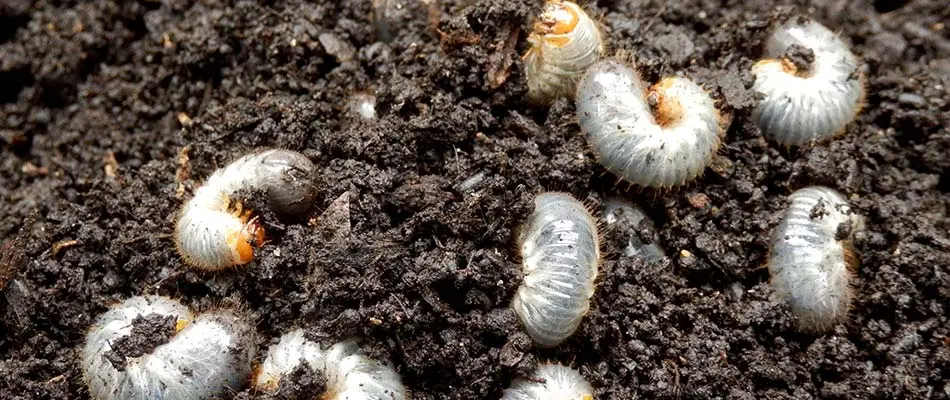
When you see irregular dead spots in your lawn in non-drought conditions, these guys are probably to blame. There are many different species of grubs such as June Beetle Grubs, Japanese Beetle Grubs, and Chafer Beetle Grubs but it’s nearly impossible to tell them apart. They all cause similar lawn damage: the dead or yellowing grass that is the bane of homeowners across the country. Some grub species also attract other pests, such as raccoon or skunks, to your yard.
Chinch Bugs
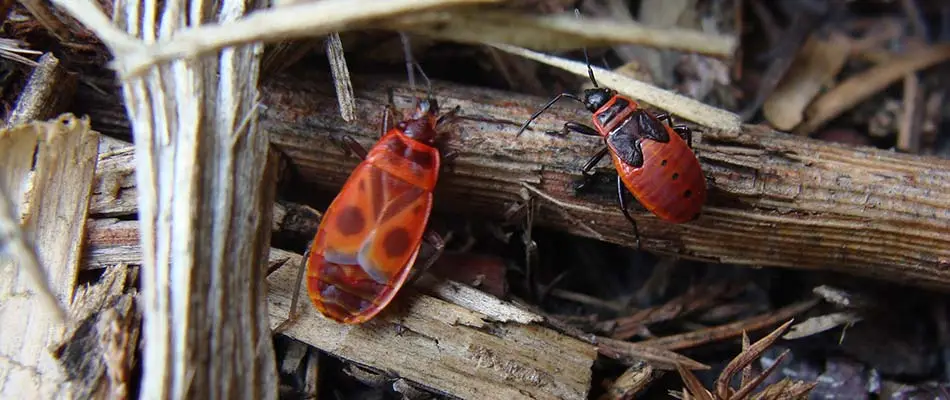
Chinch bugs love a meal of turf grass. These pests feed by sucking the sap out of your grass while also excreting an anticoagulant that prevents the remaining grass from absorbing water. This results in your grass wilting and your lawn dying. Damage from chinch bugs is most visible between June and September. The symptoms of a chinch bug infestation can easily be mistaken for a lawn experiencing drought stress so be sure to check carefully if you notice your lawn taking on a purple tinge before wilting, yellowing, and dying.
Sod Webworms
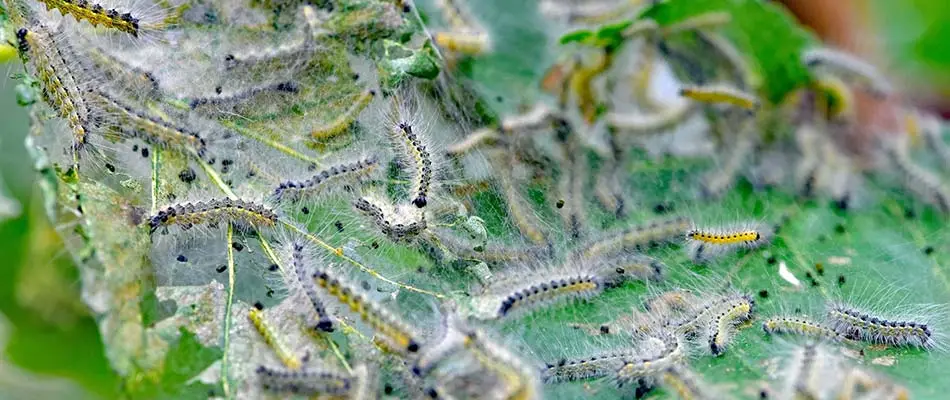
These foliage-eating pests won’t touch the roots of your grass, but they will devastate the blades leaving your lawn looking just as damaged as if they had been munching on the root system. The damage they cause can be swift, extensive, and occur multiple times in a season as they have several spawning periods every summer. Sometimes lawns experience a double whammy from this pest as the presence of sod webworms also attracts burrowing mammals and birds that like to snack on them, leaving holes behind from where they dug the webworms up.
Cutworms
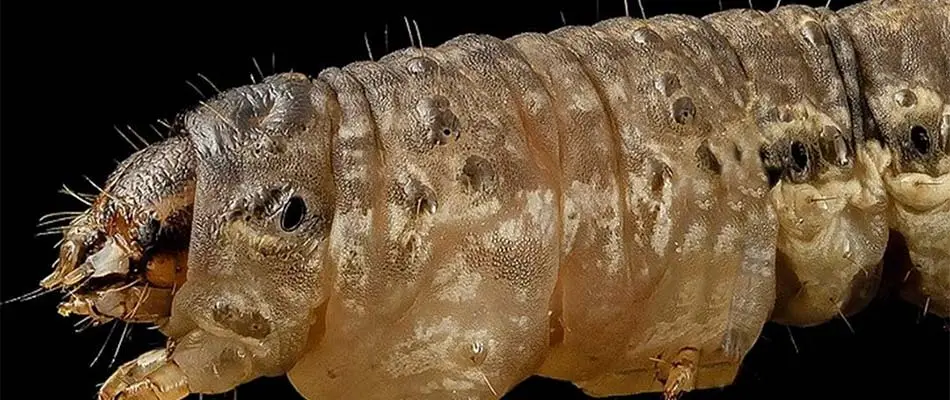
There are many different varieties of cutworms but all of them do essentially the same kind of damage to your lawn. Before eventually turning into moths, cutworms spend their lives munching on blades of your grass and the leaves of your plantings at night and shelter in underground burrows during the day. This daytime behavior makes it difficult to diagnose cutworm damage as there are many pests that munch on blades of grass. However, a close examination of damaged areas will reveal their burrows and signature sheared off grass blades. Like sod webworms, there are up to five different spawnings of cutworms throughout the year.
Armyworms
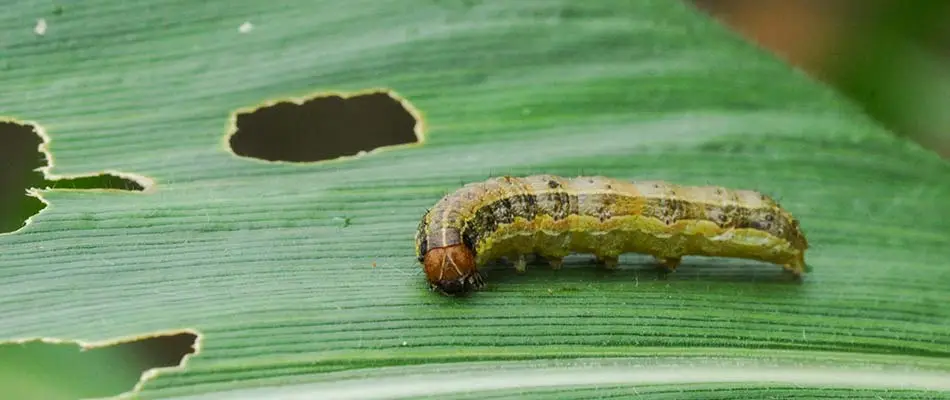
Armyworms are similar to cutworms in that they munch on your blades of grass and will turn the leaves of your plants into skeletons. Unfortunately, adult brown moths will lay clusters of eggs that will hatch into armyworms and spend the next three weeks munching on your lawn until they too turn into moths. Armyworms will leave telltale circular patches of dead lawn from their nighttime and early morning feedings. When infestations are especially heavy, we’ve heard it described as “the lawn looks like its moving” from our customers.
Fleas, Ticks, & Mosquitoes
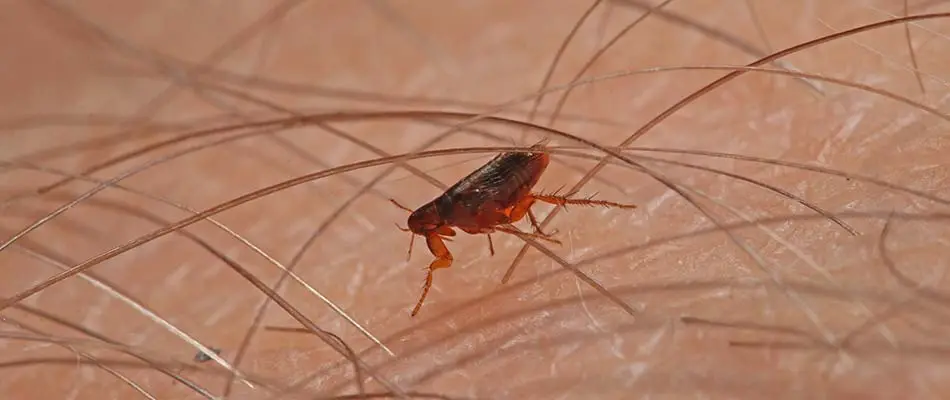
These are the Big Three of lawn pests. We’ve grouped this trifecta together because, while they do not cause lawn damage, they are among the most well known of lawn pests and do impact your ability to enjoy your lawn. What most people don’t know is that readily available lawn care solutions, like we at Sharp Lawn Care provide, can control the populations of these pests in your lawn, resulting in a much more enjoyable summer experience.
Solutions for Lawn Pest Problems
While it may be tempting to buy out the pesticide section of your local lawn and garden store, that will cause more harm than good in the long run and leave your lawn as susceptible to pests next year. There are better, longer-term solutions that will solve your lawn pest problem and leave your lawn healthier overall.
Biological Pest Control
Mother Nature knows best when it comes to solving your pest problems. All of the common lawn pests you are likely to encounter have a natural predator that won’t cause additional problems to your lawn. These aren’t the birds and moles you also have to combat when you have a pest problem. These are organisms like milky spore, nematodes, and neem oil. Milky spore and nematodes have the added benefit of being present in your lawn for years after their initial application so they act as a natural barrier to reinfestations. The problem with biological pest control is that it is not fast-acting and usually requires the presence of the actual pest to be effective. These are not prophylactic measures you can take to prevent an infestation.
Plant-Based Pesticides
Botanical pesticides have become more and more popular as people discover the perils of using traditional chemical pesticides. These pesticides are made from plants and are less harmful to both people and the beneficial bugs and worms that live in your lawn. However, while these pesticides are effective in treating pest problems, they are less powerful than their chemical counterparts. Most instructions for using botanical pesticides require direct and immediate contact with the pest you are trying to eradicate, which makes application more difficult especially for nocturnal pests.
Whole Yard Insecticide
The easiest way to fight common lawn pests is to hire a professional lawn company to apply insecticide to your whole yard. At Sharp Lawn Care, we only use eco-friendly products for this service so you don’t have to worry about it causing further damage. One application of our whole yard insecticide package will give you 30 days of relief from pests. This allows your lawn to heal and regenerate. A healthy, vibrant lawn is not only visually appealing but it is your first defense against insect infestations.
This treatment is more affordable than you think. Click Here for a quote to see how easy and affordable it is to enjoy your lawn all summer long!
We’ve linked tools and products in this article that may help you complete this work yourself. As an Amazon Associate, we earn from qualifying purchases.


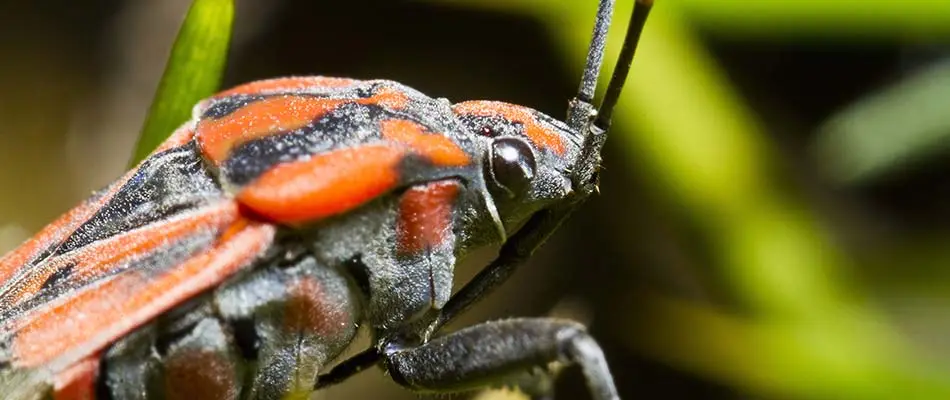

Comments (0)
Thanks for your comment!
Thanks for your feedback! Your comments have been successfully submitted! Please note, all comments require admin approval prior to display.
Error submitting comment!
There is a problem with your comment, please see below and try again.